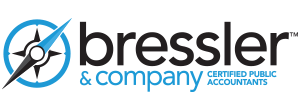An Easy Way to Invest for Retirement
Many people are intimidated by the idea of picking mutual funds. They wonder how they’ll know if they have made the “right” decision. I know that’s how I felt almost 20 years ago when I invested in my first fund. Fortunately, today there is an easy way to invest for retirement. It’s called a fund of funds. These funds go by various names, such as target retirement funds or lifetime funds, but the concept behind them is all the same.
A Fund of funds allows you to completely diversify your investments in a single mutual fund. Rather than investing in stocks and bonds, however, these funds invest in other mutual funds (thus the fund of funds name). So when you invest in a target or lifetime fund, your money is then allocated into a number of mutual funds covering everything from large US companies to emerging markets to bond funds.
In this article we’ll first look at some Vanguard and Fidelity fund of funds for you to consider. Then will discuss the pros and cons of these investments. And finally, we’ll discuss some factors you should consider when deciding whether these lifetime funds are right for you.
Fidelity Freedom Funds and Vanguard Target Retirement Funds
Both Fidelity and Vanguard offer one stop mutual funds. Fidelity calls their funds of funds “Freedom Funds,” while Vanguard markets its product under the name, “Target Retirement Funds.” They both accomplish the same goal–diversifying your money into multiple mutual funds.
Fidelity offers a helpful tool to assist you in picking the Freedom Fund that’s right for you. You simply select how many years you have until retirement, and Fidelity recommends which Freedom Fund it believes is right for you.
Here I should noted that Fidelity has multiple Freedom Funds and Vanguard has multiple Target Retirement funds. They are both tied to how many years you have left until retirement. As you get closer to retirement, the mix of mutual funds they invest in becomes more and more conservative. This basically means that the amount of your investment in bonds increases over time.
So back to Fidelity’s Freedom Funds. For me, Fidelity recommends Freedom Fund 2030, which has the following mix of funds:

So how does the Fidelity Freedom Fund 2030 achieve this diversity? It takes every dollar invested in the fund, and places it into about 20 different Fidelity mutual funds. You can check out all of the funds it invests in here. So in other words, it does the work of diversifying your investments for you. One fund and you’re done.
Vanguard takes a somewhat more simplified approach, but either way you’re still just investing in one fund. Vanguard’s Target Retirement 2030 fund invests in just five mutual funds–four stock funds and one bond fund. And by following the link to Vanguard, you can use its nifty tool to see how your investments in one of its target funds will change as you near retirement.
The Pros and Cons of Target Date Funds
Let’s start with the advantages of target date funds. First, it’s an easy way to invest in mutual funds. Simply pick the fund based on how long you have until retirement, and then go spend time doing what you love to do. You’ll have instant diversification, and the cost of the funds is reasonable. The Vanguard Target Retirement 2030 fund, for example, has an expense ratio of just 0.21%. In addition, your investments are automatically rebalanced and adjusted as you near retirement.
What you gain in simplicity, however, you do lose with lack of flexibility. First, these target date funds invest only in their own mutual funds. Fidelity’s funds of funds won’t be investing in Vanguard funds, for example. Second, other than picking which target fund to invest in, you don’t have a say in how Fidelity or Vanguard invests your money. Fortunately, there are ways to address these disadvantages, so read on.
How to Decide What’s Best for You
As you decide whether to invest in a target date fund, and if so, which one, keep these tips in mind:
- Ignore your age: Just because you may have 25 years until retirement doesn’t mean you have to invest in the matching target date fund. You’re free to invest in the fund that has 30 years left until retirement (more aggressive) or 20 years (less aggressive) or any other target date fund. Remember that Fidelity and Vanguard design these funds with the mix of asset classes they think is best given a specific time horizon for your investments, but you’re free to pick whatever fund you want.
- Add some other funds: You can take a hybrid approach by investing in a target date fund plus a few other funds. For example, you might invest 85% in a target date fund, 7.5% in an emerging market fund, and 7.5% in a REIT fund. You’ll give up some of the simplicity of investing in a single fund of funds, but you’ll add a bit of diversity.
- Design your own portfolio: In the end, if the target date funds are not for you, it’s easy to design your own portfolio of investments. The starting place is my series called the Beginner’s Guide to Asset Allocation.
If you have any questions about investing in mutual funds, give Bressler & Company a call at 559.924.1225. We’d love to discuss this with you.
Article taken from: Doughroller.net and written by: Rob Berger





